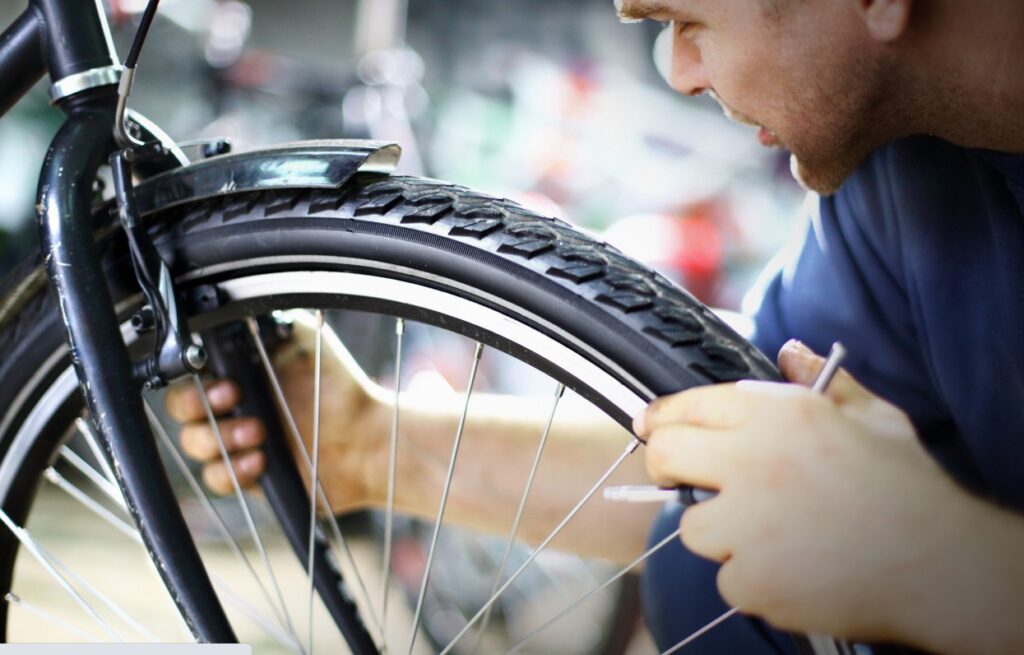How Many Miles Do Road Bike Tires Last? Answered
This article will explain How Many Miles Do Road Bike Tires Last? Typically, road bike tires last between 1,000 to 3,000 miles. However, various factors such as riding conditions, tire quality, and maintenance habits can significantly affect this range. The longevity of road bike tires is a crucial aspect for cyclists of all levels, impacting performance, safety, and overall riding experience.
Key Takeaways
- Road bike tires generally last between 1,000 to 3,000 miles.
- Tire lifespan can be influenced by type, usage, and maintenance.
- Regular inspection and proper inflation extend tire life.
How Many Miles Do Road Bike Tires Last?
Road bike tires typically last between 1,000 to 3,000 miles. However, this range can vary based on the tire’s design, the rider’s habits, and environmental conditions.

Lifespan of Road Bike Tires
Road bike tires serve as the critical point of contact between the cyclist and the road. Understanding their durability and when to replace them is essential for every cyclist.
The lifespan of road bike tires depends largely on their construction, material quality, and the rider’s weight and riding style. High-quality tires with proper care can reach the upper end of the mileage spectrum, offering both performance and reliability.
Tire wear can be uneven and influenced by external factors such as road debris and weather conditions. Regular checks for signs of wear, such as cuts, cracks, or tread fading, are imperative. By monitoring and maintaining your tires, you can ensure they last as long as possible while maintaining optimal performance.
Factors Affecting Tire Longevity
Several factors contribute to how long your road bike tires will last, making it a variable element in cycling maintenance.
Type of Tire
The type of tire—clincher, tubular, or tubeless—plays a significant role in its durability. Clincher tires, the most common type, typically offer a balance between longevity and performance.
Tubular tires, favored for racing, may have a shorter lifespan due to their construction and materials. Tubeless tires, with their ability to run lower pressures and resist punctures, might last longer but depend heavily on the sealant’s effectiveness.
Riding Conditions
Riding conditions significantly impact tire wear. Smooth, clean asphalt is less damaging than rough, debris-filled surfaces. Additionally, wet weather increases wear and tear due to the abrasive action of grit and water. Adapting your tire choice and maintenance routine to your typical riding conditions can greatly extend their life.
Maintenance and Care
Proper maintenance is crucial for maximizing tire lifespan. This includes regular cleaning, checking for debris, and maintaining the correct tire pressure. Over or under-inflated tires can lead to increased wear, punctures, or blowouts. A consistent maintenance schedule ensures tires remain in optimal condition for as long as possible.
Tips for Extending Tire Life
Extending the life of your road bike tires is not only cost-effective but also enhances your riding experience. Here are practical tips for maximizing tire durability:
- Regularly inspect tires for signs of wear or damage.
- Maintain correct tire pressure based on your weight and riding conditions.
- Rotate tires between the front and rear wheels to even out wear.
- Avoid riding in conditions that are particularly harsh on tires, like gravel paths or roads with lots of debris.
Implementing these strategies can significantly prolong the life of your road bike tires, ensuring you get the most out of your investment.
Signs of Wear and When to Replace
Recognizing the signs of tire wear is crucial for safety and performance. Look for:
- Thinning tread or flattened center sections.
- Visible fabric or cords through the rubber.
- Regular punctures or loss of air pressure.
- Cuts, cracks, or sidewall damage.
When these signs become evident, it’s time to consider replacing your tires to maintain the safety and integrity of your rides.
How Often Should You Change Your Road Bike Tires?
The frequency of changing your road bike tires depends on several factors, including mileage, riding conditions, and tire quality. On average, road bike tires need to be replaced every 1,000 to 3,000 miles.

However, cyclists riding on rough terrain or in harsh conditions may need to replace their tires more frequently. Regular inspections for signs of wear, such as tread thinning, cuts, or punctures, are crucial.
If you’re a frequent rider, conducting monthly checks and tracking your mileage can help you anticipate when to change your tires. Remember, maintaining optimal tire condition is key to safety and performance on the road.
How Do I Know When To Replace My Road Bike Tyres?
Knowing when to replace your road bike tires is essential for maintaining safety and efficiency. Look for visible signs of wear, such as a squared-off tread, visible cuts, or threads.
Additionally, frequent punctures or a noticeable decrease in performance can indicate that your tires are worn out. If the tire’s sidewall starts showing cracks or if the rubber becomes exceptionally hard, it’s time for a replacement. Riding on worn tires increases the risk of accidents, so it’s important to replace them before they fail completely.
How Often Should You Change Street Bike Tires?
Street bike tires, used for everyday commuting and urban cycling, typically have a longer lifespan than pure road bike tires due to their thicker tread and more robust construction.

Despite this, they should still be changed approximately every 2,000 to 4,000 miles, depending on usage and conditions. For regular commuters, inspecting tires for urban debris, such as glass and metal fragments, along with regular wear, is crucial.
Like road tires, keep an eye out for signs of aging, such as cracks and flat spots, and replace the tires when these signs become evident to ensure safety and reliability.
What Is The Average Cost For Bicycle Tires?
The cost of bicycle tires can vary widely based on type, brand, and performance level. On average, basic road bike tires can range from $30 to $60 each, while high-end models, especially those designed for racing or specific conditions, can cost $80 to $150 or more.
For street bike or commuter tires, prices typically range from $25 to $50. Factors affecting price include puncture resistance, weight, and material quality.
While investing in more expensive tires can provide better performance and longevity, there are quality options available at every price point to fit various needs and budgets.
Conclusion
In conclusion, the longevity of road bike tires is a crucial component of cycling that requires attention and understanding. By recognizing the signs of wear and understanding the factors that influence tire life, cyclists can make informed decisions about tire maintenance and replacement, ensuring their rides remain safe and enjoyable. Regular checks and proper care can significantly extend the life of your road bike tires, providing a better cycling experience.
Frequently Asked Questions
Are there specific types of road bike tires that last longer than others?
Yes, there are different types of road bike tires designed for various purposes. Touring and commuter tires are typically built for durability and puncture resistance, making them last longer than lightweight, high-performance racing tires. Selecting a tire that matches your riding style and conditions can lead to better tire longevity.
How does bike storage affect tire lifespan?
Proper storage can help extend the life of your bike tires. Store your bike in a cool, dry place away from direct sunlight to prevent the rubber from deteriorating. Also, avoid hanging your bike by the tires for extended periods, as this can deform the tires and lead to premature wear.
Can the quality of road bike tires affect how long they last?
Yes, the quality of the tires can greatly influence their lifespan. Higher-quality tires made with superior materials and construction techniques can withstand wear and tear better than cheaper options. Investing in good-quality tires can result in better performance and longer life.
How does weather affect road bike tire durability?
Weather conditions can significantly affect tire longevity. Hot weather can soften the rubber, leading to faster wear, while cold conditions can make tires harder and more prone to cracks. Wet conditions can also accelerate wear by introducing abrasive particles between the tire and road. Adapting your tire choice and pressure according to weather conditions can help extend their lifespan.

Welcome to the exhilarating world of Matt Rex, a professional car racer turned renowned vehicle enthusiast. Immerse yourself in his captivating blog as he shares heart-pounding adventures, expert reviews, and valuable insights on cars, trucks, jets, and more. Fuel your passion for speed and discover the beauty of vehicles through Matt’s engaging stories and meticulous expertise. Join the ever-growing community of enthusiasts who find inspiration and expert advice in Matt Rex’s blog—a digital hub where the thrill of speed meets the pursuit of knowledge.







